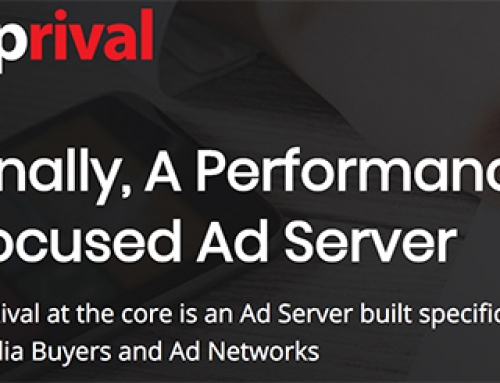
Are you looking to optimize your ads using video advertising formats?
As the online video advertising options continue to expand, it is essential to understand how each type works and the pros and cons of each format.
In this article, we will go over various video advertising formats, how they work, and the pros and cons of television advertising. Read on to learn how to optimize your ads!
In-Stream Video Ads
The most popular and well-known video advertisement that people are familiar with is linear video ads. Though they are often incorrectly called in-stream ads, linear ads play in a video player before, during, or after a piece of video content. All in-stream ads are played within the primary video player – where the actual content is being viewed.
According to the IAB (Interactive Advertising Bureau), in-stream is a broader category, including Linear Video Ads and Non-Linear Ads, under the same umbrella.
Linear Video Ads
Have you ever been asked ‘What ad would you rather watch?’, after selecting a show to view on Hulu?

These types of ads are known as Linear Video Ads, and are commonly referred to as “pre-, mid-, and post-roll ads.” The key to linear ads is that they take over the full video player screen or space. It is considered a linear video because they run in line sequentially with the content an individual is viewing. For example, a linear ad would play as follows: ad-video, video-ad-video, or video-ad.
As previously mentioned, these types of ads can also include an interactive aspect, such as giving users a choice of which online ad they’d like to watch, or when they’d like to view the advertisement.
According to the IAB (Interactive Advertising Bureau), linear ads are played within either 15 or 30-second spots. They may be less than that, but should never exceed 30 seconds. Do not allow for fast-forwarding through a linear video ad. As far as size goes, these ads can be 4:3 or 16:9 aspect ratio. However, nowadays, the size of 16:9 is far more common for online video players.
Different Types of Linear Video Ads
- Pre-roll: Ad will run before a piece of video content.
- Pros: The ad unit must be played before the content will play.
- Cons: Opens for the viewer to click out of the video player before your ad is done playing.
- Mid-roll: Ad runs somewhere in the middle of a piece of video content, pausing the content, and resuming it when the TV ad has been played through entirely.
- Pros: Reduces abandonment by viewers, as they are ‘hooked’ into the video content already, and looking to resume it once your ad is done playing.
- Cons: A bit intrusive. Related to TV advertising it will give viewers a similar feeling and could still cause abandonment.
- Post-roll: The television ad will play at the end of a piece of video content.
- Pros: These display ads are the least intrusive.
- Cons: Viewers have no motivation to watch as the content they wanted to view has already been completed.
- User Ad Choice Overlay: An ad server that incorporates an interactive overlay that offers the audience a choice of which ad they’d prefer to view. A default video ad will play a pre-roll once a specified amount of time has passed without the viewer selecting their advertisement preference.
- Pros: Better targeting of ads, since users can decide which brand or product they want to see an advertisement for.
- Cons: Possibility for abandonment if the timer is too long, and an ad isn’t played before the viewer gets restless.
- Interactive Video Ad: This kind of television advertising takes over the entire screen, and pauses the video content the viewer is currently watching. Interactive Video Ads allow for a variety of different interactions for viewers, such as: click for more information, sign up for a newsletter, locate a store, etc.. Typically, these ads are a mix of video, animation, or static images, as well as interactive elements. They may be presented before, during, or after the content plays, and usually last for 15-30 seconds.
- Pros: Incorporates the viewer and allows for further engagement with the brand. Additionally, interactivity either expands in the player or clicks out to an advertiser website.
- Cons: As with most ads, it could cause abandonment if the timer is too long, and the viewer gets impatient.
Non-Linear Video Ads
Overlay Video Ads
These video ads run simultaneously with the video content, typically in the form of an interactive banner ad in an overlay. If the viewer clicks on these ads, the material they were viewing will generally pause, and either a full player ad is shown, or the user is redirected to an advertiser’s website.
After a set period, some of these ads will “collapse” into a smaller piece, so as not to cover a sizeable portion of the video content the viewer is watching. Some ads also have a “close” action, which does the same thing but allows the viewer to option of minimizing the ad. Overlay video ads can display over linear ads, too. Generally speaking, a non-linear video ad will run for 5-15 seconds before rotating to another ad or reducing the ad itself in size. These ads usually cover the bottom 20% of the video content being played.
- Pros: Ads are displayed without having to make the target audience wait for their video content to continue playing. Options such as minimizing the size of the ad. Viewers are comfortable and familiar with this type of advertisement, as there are similar ads on local TV. The viewer initiates all interactions with the video ad.
- Cons: The ad could potentially cover essential information for the viewer watching video content, like subtitles or captions. Some movement in the ads could be distracting, and possibly annoy the viewer, causing abandonment.
Non-Overlay Video Ads

Some ads can run concurrently with the video content a viewer is watching, within the video player, and not overlay the video content. These ads are typically used as an ‘invitation’ to interact with the brand or other video content. In theory, these are very similar to an overlay ad, but remove the negative impact of covering the video content.
- Pros: Ads are displayed without making the viewer wait for their video content. These ads are a constant, persistent reminder of the brand or product advertised, while the viewer is watching their video content. With user-initiated interactions, the audience must manually click on the ad by choice.
- Cons: The movement with these ads may become distracting for viewers, and annoy them to the point of causing abandonment or lowering the reputation of said brand.
Companion Ads
By definition, companion ads are ads that are “in addition” to the video player and any ads that run within it. They are usually displayed on the web page around the video player, and more often than not, take the form of display banner ads of standard IAB sizes, such as 300×250, 728×90, etc..
Companion ads offer persistent visuals for a brand or product during the video content playing, without taking up the video players space. These ads may include text, static images, or rich media.
- Pros: Ads do not interfere with the video content playback. All interactions received are initiated by the user.
- Cons: If the viewer no longer wants to see the ad, it can be easily covered if the video player is changed to full-screen mode.
In-Banner Video Ads

In-banner video ads are ads that show video within a standard video banner size and placement, that may or may not be expandable. These ads can serve as companion ads, meaning they are displayed on a page with a video player.
In-banner video ads may also be used as stand-alone placements on pages without video players, and the ad engine handles the playing of the video ad within that banner space.
Some varieties of this include collapsible in-banner video ads, which start by covering a large area of the web page and will shrink down to the standard banner video ad size automatically or through user interaction. They also include expandable in-banner video ads that start being the standard banner size playing the video but also offer the user an option to expand the video and watch it in a larger area on their screen. When these types of ads are expanded, they will overlay the content on the web page.
- Pros: The viewer initiates all interactions. These ads don’t interfere with the content of the web page. Offer the ability of in-stream video ads on any web page, including pages without a video player or other streaming content. They fit into standard display banner ad spaces, for example, 300×250 or 728×90.
- Cons: The ads may be distracting or annoying to viewers due to their movement.
In-Page Video Ads
In-page video ads are embedded video players that are precisely placed to show a video ad with no video content attached. Similar to in-banner video ads, these do not need to be a companion to a standard video player.
Generally speaking, in-page video ads require a decent amount of space on a web page. However, some ad networks offer smaller placements for these ads.
- Pros: Offer the ability to play in-stream video ads, but still be placed on any page where space is available, regardless of whether or not that page has a primary video player or other streaming content.
- Cons: Publishers do often place these ads very low and “out of sight” on most web pages. The movement of these ads may be distracting or annoying to a specific audience.
In-Text Video Ads
Video advertising meets contextual advertising in these user-initiated ads.
In-text video ads work by having words within the text on the web page highlighted, and when a user rolls their mouse over them, an overlay pops up and plays the video associated with the highlighted word.
- Pros: The user or viewer initiates all interactions made. It can display in-stream video ads. It can also be placed on any page and does not need to be a page with the primary video player or other streaming content.
- Cons: Some viewers may become frustrated or annoyed by the inadvertent mouse over a highlighted word initiating an ad to play.
Sponsorship Graphics
Sponsorship graphics are graphics and video components that are displayed within the video player, around or adjacent to the video content playback. Typically, these graphics are persistent through the full video player presence and may offer interactivity outside of the videos playback window.
Marketers have branded video player skins that expand outside of the video players’ main window. These ads can run just during the ad, or be visible through the entire playback of the video content.
- Pros: The persistent visuals and optional interactivity during the video playback offer optimum interaction with viewers. It can display in-stream video ads regardless of whether or not the web page has a primary video player or other streaming content.
- Cons: Maybe a bit distracting for viewers. The main content panes on the web page must be wide enough to display the video content correctly.
In-Game Video Ads
Have you ever seen ads appear while you were waiting for a video game to load?
These ads are called in-game video ads, and usually appear while a captive audience is waiting for a game to load. These ads are often seen with online games, social media, or mobile games. To put it simply, a video player will overlay as the game is loading, or if the game is loading a new level.
- Pros: These ads don’t disrupt the gamer experience, as they are only played during game pauses. Non-skippable, and short enough to help reduce viewer abandonment.
- Cons: Some could find these ads off-putting.
Connected TV Video Ads

Video ads in this category can be displayed as pre-app (as in they play while an app is loading), or in-app (as in they play similarly to more traditional marketing methods like online video overlays or in-streams).
Certain connected TV ads will display right within an app store or menu, and can then be expanded to full-screen takeover. Other connected TV ads will offer further information about the specific program currently being watched.
There are other formats as well. These include Insterstitial (ads display in between channel changes when programs are loading on the TV, etc.) and Interactive search results page ads.
As connected TV ads continue to evolve, much like online video ads have, they will work towards enhancing the viewer’s experience by offering more informational advertisements relevant to the content being viewed. On the other hand, there could come a time when these ads replace traditional marketing TV ads. Instead of cutting away from a show for a TV commercial break, they will display the ads side-by-side (Fox Network has started to do this during some NASCAR races) with an interactive advertisement but continue playing the show. This helps monetize the content by inserting non-skippable ads along the side during shows.
- Pros: This type of advertising campaign brings online video interactivity to the TV screen. It allows viewers to engage more deeply with brands, shows, cast members, and products.
- Cons: The evolution of these types of ads could be slow, depending on connected TV sales and consumer openness to a new advertising media format in association with traditional media or television experience.
Game Console Video Ads

Do you consider yourself a “Gamer”?
Well, Microsoft recently announced its “NUads” campaign, which are ads set to run within the dashboard of a gamers Xbox 360 or Xbox One video game console. These “NUads” will help players utilize their Kinect voice control and motion-sensing technology to increase user engagement.
NUads typically run about 30 seconds long and offer viewers the opportunity to have their questions answered – regarding other online games and related content. As for advertisers, real-time feedback is included, allowing for a closer look at viewer engagement, etc..
- Pros: NUads have the potential to revolutionize advertisements for gaming consoles and other streaming video services that have ads on them. With the capability for voice and gesture-controlled ads, viewers will be more engaged, which could boost user engagement with the advertised brands.
- Cons: These ads have the possibility of backfiring, and associated brands may earn a negative sentiment from gamers and viewers alike.




